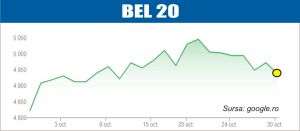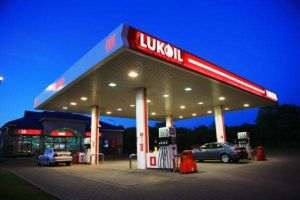Redeschisă în iunie 1990, după mai bine de 40 de ani de când regimul comunist naţionalizase Bursa de Valori şi Mărfuri în 1948, Bursa de Valori din Budapesta (BÉT) este astăzi a doua cea mai mare bursă din Europa Centrală şi de Est în termeni de capitalizare şi lichiditate, conform celor prezentate pe propriul site.
Ca în toate ţările Europei de Est, în Ungaria, finanţarea prin mecanismele pieţei de capital a jucat întotdeauna un rol mult mai puţin important decât cea prin bănci.
• Privatizarea companiilor de stat - baza dezvoltării bursei ungare
În lucrarea "The Hungarian Financial System", autorii (Vezi notă) punctează că procesul privatizării în această ţară a avut un succes mai mare faţă de altele din regiune, între 1989 şi 2003 Ungaria încasând 31% din PIB din vânzarea companiilor de stat, performanţă depăşită numai de Slovacia. O mare parte din acest succes se datorează procesului privatizării companiilor de stat prin bursă. De fapt, privatizarea companiilor de stat a fost principalul scop pentru care a fost reînfiinţată bursa ungară, şi invers, privatizările ar fi trebuit să dea un imbold dezvoltării bursei, altături de generarea veniturilor bugetare, se arată în lucrare.
Conform celor prezentate, până în 1994, privatizările prin bursă erau rare. Prima companie listată, în 1990, a fost IBUSz, o agenţie de turism, fiind urmată de lanţul hotelier naţional Danubius, în 1992-94. (Fondurile mutuale şi cele de pensii străine au stat departe de bursa din Budapesta până în 1995 din cauza ratingului slab al Ungariei).
Procesul privatizării a accelerat în 1994 datorită a doi factori, notează autorii. Primul a fost dat de un plan ambiţios de vânzare a multor companii de stat în 1995-1996. Al doilea - la finalul lui 1994, Guvernul şi economia Ungariei erau aproape de colaps, deficitul bugetar şi cel de cont curent fiind de 8,4%, respectiv 9,5% din PIB. Pentru a strânge bani la buget, la finele lui 1994 s-au făcut împrumuturi de 150 milioane de dolari de la creditori străini. Contractul avea o scadenţă de un an şi includea drept garanţie acţiuni Matav (actuala Magyar Telekom) şi MOL. Astfel, a devenit evident că privatizarea trebuia accelerată pentru a plăti împrumutul şi pentru finanţarea restului datoriei publice, se arată în lucrare.
• Cei mai importanţi emitenţi - listaţi între 1994 şi 1997
Conform celor prezentate, între 1995 şi 1997, statul a încasat circa jumătate din veniturile totale obţinute din privatizare începând cu 1990. În acea perioadă au fost listate cele mai mari companii de astăzi ale bursei din Budapesta: OTP Bank, MOL şi Gedeon Richter. Practic, BÉT a beneficiat substanţial de listarea companiilor de bază ale economiei ungare, între 1994 şi 1997. Cu toate că privatizările au continuat şi după 1997, IPO-urile sau ofertele publice s-au redus. Astfel, odată cu diminuarea efectului privatizărilor, dezvoltarea bursei ungare a încetinit, notează autorii.
Între 1990 şi 2009, 36 de companii de stat au fost listate la bursa din Budapesta, se arată în lucrare, adăugându-se că, prin eliminarea proprietăţii private pentru marile companii listate şi creşterea ponderii sectorul privat în PIB, de la 50% în 1993 la 80% în 1998, bursa a accelerat procesul de transformare a economiei ungare de la cel bazat pe proprietatea statului la cel bazat pe proprietatea privată.
Pe lângă piaţa spot, la Budapesta a fost creată încă din primii ani de la reînfiinţarea bursei şi o piaţă la termen, primele instrumente derivate, contracte futures cu indicele principal drept activ support fiind tranzacţionate în 1995, în timp ce contractele pe acţiuni au fost introduse în 1998.
• Piaţă emergentă în ierarhia MSCI şi emergentă avansată conform FTSE Russell
Astăzi, piaţa de capital din Ungaria este emergentă în ierarhia MSCI (unde România este piaţă de frontieră) şi emergentă avansată conform FTSE Russell (România este emergentă secundară), datorită performanţelor celor trei emitenţi importanţi.
Pe lângă acţiuni, în piaţa spot (la vedere), sunt listate şi alte instrumente financiare, din care se remarcă obligaţiunile (guvernamentale, corporative sau ipotecare - dar care au o lichiditate redusă). La finele lunii martie, capitalizarea companiilor ungare era de circa 23,9 miliarde de euro, iar valoarea tuturor instrumentelor tranzacţionabile pe acest segment al BÉT de 94,8 miliarde euro (peste jumătate fiind obligaţiuni guvernamentale), conform datelor prezentate de bursa din Budapesta.
BUX este principalul indice al bursei ungare, fiind în prezent compus din titlurile a 16 societăţi, ponderea celor trei mari companii ale BÉT fiind de aproape 90%. Este un indice de tip total-return, ceea ce înseamnă că reflectă şi dividendele plătite de emitenţi. Indicele BUMIX include companiile de dimensiune medie sau mică ale bursei din Ungaria, având în momentul actual 17 societăţi. Este, de asemenea, un indice de tip total-return. Indicele CETOP (Central European Blue Chip Index) reflectă evoluţia celor mai mari companii din Europa Centrală şi de Est, fiind benchmark pentru managerii de fond ce investesc în regiunea noastră.
Acţionarul majoritar al bursei din Budapesta este Banca Naţională a Ungariei (cu o deţinere de 81,3% în octombrie 2020), cea care este şi supraveghetorul pieţei de capital.
• Grupul KELER - rol cheie în funcţionarea pieţei monetare şi de capital ungare
Grupul KELER are un rol cheie în funcţionarea pieţei monetare şi de capital ungare, fiind format din două companii: KELER - Depozitar Central (CSD) şi KELER Contraparte Centrală (CCP). KELER CSD a fost înfiinţată în 1993 şi este singurul depozitar central din Ungaria. KELER CCP a fost înfiinţată în 2008 de KELER CSD, Banca Naţională a Ungariei şi Bursa din Budapesta, pentru a externaliza activitatea de compensarea riscurilor. Încă de la început, KELER CCP a funcţionat în calitate de Contraparte Centrală şi pentru pieţele de energie din Ungaria. Toate aceste entităţi sunt deţinute direct sau indirect de Banca Naţională, reiese din informaţiile disponibile pe site-ul bursei din Budapesta.
• Industria fondurilor de investiţii - active duble faţă de cele de la noi
Activele administrate de fondurile de investiţii din Ungaria sunt într-o continuă creştere, după cum ne-a spus Richard Vegh, CEO-ul bursei ungare, făcând trimitere la date BAMOSZ (Asociaţia Administratorilor de Fonduri din Ungaria). Practic, anul trecut, activele totale administrate de fondurile ce operau în Ungaria au atins recordul istoric de 19,2 miliarde de euro. Conform datelor Asociaţiei, la finele lui 2020, activele fondurilor de investiţii deschise s-au ridicat la circa 9,9 miliarde euro, cu 13,15% peste cele din 2019, din care activele administrate de fondurile de acţiuni erau de aproape 1,7 miliarde de euro, în creştere cu 32,5%, cea mai accelerată dinamică din rândul tuturor categoriilor de fonduri.
Spre comparaţie, la finele anului trecut, activele nete ale tuturor fondurilor din ţara noastră se ridicau la circa 9,1 miliarde de euro. Activele fondurilor deschise locale erau de 4,55 miliarde de euro, la care se adaugă cele exprimate în lei ale fondurilor deschise străine distribuite în România, în valoare de 0,2 miliarde euro. Fondurile de acţiuni (atât locale cât şi străine), aveau active de aproape 410 milioane de euro, conform calculelor noastre pe baza datelor Asociaţiei Administratorilor de Fonduri din România (AAF).
• BÉT intenţionează să transforme indicii BUX şi CETOP astfel încât să fie compatibili cu criterii ESG
Conform Raportului Strategic al bursei din Budapesta aferent lui 2020, principala sarcină pentru următorii ani a BÉT va fi, pe lângă dezvoltarea pieţei, atingerea obiectivelor companiei şi listarea bursei pe propria platformă.
Bineînţeles că dezvoltarea pieţei include sporirea finanţărilor prin mecanismele bursiere şi creşterea numărului de investitori, îndeosebi a celor locali. Conform raportului, 58,4% din acţiunile companiilor ungare listate la Budapesta erau deţinute de investitori străini, 12,3% de corporaţii non-financiare, 10,6% de instituţii publice şi 10,48% de gospodării.
În plus, se va pune accent pe integrarea aspectelor ESG (Environmental, Social and Governance) în segmentele relevante operaţionale ale bursei şi se va continua procesul de digitalizare. BÉT intenţionează să transforme indicii BUX şi CETOP astfel încât să fie compatibili cu criterii ESG, iar bursa deja evaluează nevoile administratorilor de fonduri în acest sens. Recent, operatorul pieţei ungare a publicat ghidul de raportare ESG pentru emitenţii listaţi la bursa din Budapesta.
Notă
Szabolcs Szikszai, Tamas Badics, Zsolt Stenger, Csilla Raffai, Andras Tothmihaly, The Hungarian Financial System, noiembrie 2012, scurtă sinteză din pag. 30-44.
--------------------------------------------------------------------------------------------------------------------------
The Hungarian stock market - benchmarks and prospects
• The National Bank owns the stock exchange and oversees the market
• Transactions involving derivatives began back in 1995
• The listing of BÉT on its own platform - one of the goals of the Hungarian stock exchange for the coming years
Reopened in June 1990, more than 40 years after the communist regime nationalized the Stock Exchange and Commodities in 1948, the Budapest Stock Exchange (BÉT) is today the second largest stock exchange in Central and Eastern Europe in terms of capitalization and liquidity, according to information presented on its website.
As in all Eastern European countries, in Hungary, financing through capital market mechanisms has always played a much less important role than the one taking place through banks.
• Privatization of state-owned companies - the foundation for the expansion of the Hungarian stock exchange
In the "The Hungarian Financial System" work, its authors (see note) point out that the privatization process in this country was more successful than in other countries in the region. Between 1989 and 2003 Hungary earned 31% of the GDP from the sale of state-owned companies, performance which was only surpassed by Slovakia. Much of that success is due to the privatization of state-owned companies through the stock exchange. In fact, the privatization of state-owned companies was the main purpose for which the Hungarian stock exchange was re-established, and vice versa, the privatizations were supposed to provide a boost to the development of the exchange, along with generating additional budget revenues, the paper states.
According to data presented in the material, until 1994, privatizations via the stock market were a rare sight. The first company listed, in 1990, was IBUSz, a travel age cy, followed by the national hotel chain Danubius, in 1992-94. (Mutual investment and pension funds avoided the Hungarian stock market until 1995 due to Hungary's low rating).
The privatization process picked up speed in 1994 thanks to two factors, the authors note. The first was an ambitious plan to sell many state-owned companies in 1995-1996. The second - at the end of 1994, the Government and the Hungarian economy were close to collapse. The budget deficit and the current account were at 8.4% and 9.5% of the GDP, respectively. In order to raise money for the state budget, at the end of 1994, 150 million dollars were borrowed from foreign creditors. The contract had a maturity of one year and included Matav (Magyar Telekom) and Mol shares as collateral. Thus, it became obvious that the privatization had to be sped up to pay off the loan and fund the remaining public debt, the material states.
• The most important issuers - listed between 1994 and 1997
According to the information presented, between 1995 and 1997, the state earned about half of the total privatization revenues since 1990. At that time, the companies which are today the largest on the exchange were taken public: OTP Bank, MOL and Gedeon Richter. Practically, BÉT has substantially benefited from the listing of the core companies of the Hungarian economy, between 1994 and 1997. Although the privatizations continued after 1997, the number of IPOs or public offerings has decreased. As a result, once the effect of the privatizations diminished, the development of the Hungarian stock market has slowed down, the authors note.
Between 1990 and 2009, 36 state-owned companies were listed on the Budapest Stock Exchange, the material states, and it adds that by eliminating state ownership for major listed companies and increasing the share of the private sector in the GDP, from 50% in 1993 to 80% in 1998, the stock market sped up the process of transforming the Hungarian economy from state-based ownership to a foundation of private ownership.
In addition to the Spot Market, a futures market has been created in Budapest from the very first years after re-establishment of the stock exchange. The first derivatives, futures contracts with the main index as their underlying asset, were traded in 1995, while contracts with stocks as their underlying assets were introduced in 1998.
• Emerging market in the MSCI ranking and advanced emerging market according to FTSE Russell
Today, Hungary's stock market is ranked as "emerging" in the MSCI ranking (where Romania is rated as a Frontier Market) and "advanced emerging" according to FTSE Russell (which ranks Romania as "secondary") due to the performance of the three major issuers.
In addition to stocks, other securities are listed on the spot market. Of those, the ones that stand out are bonds (government, corporate or mortgage - but they have low liquidity). At the end of March, the capitalization of Hungarian companies was about 23.9 billion euros, and the valuation of all tradable securities on the respective BÉT segment stood at 94.8 billion euros (of which government bonds accounted for half), according to data presented by the Budapest Stock Exchange.
BUX is the main index of the Hungarian stock market. It is currently made up of 16 stocks, of which the three biggest BÉT companies account for almost 90%. It is a Total-Return type index, which means that it also takes into account dividends paid by the issuers. The BUMIX Index includes the medium or small sized companies in Hungary, and currently features 17 companies. It is a Total-Return type index as well. The CETOP Index (Central European Blue Chip Index) reflects the evolution of the largest companies in Central and Eastern Europe, and is the benchmark for fund managers investing in the region.
The majority shareholder of the Budapest Stock Exchange is the National Bank of Hungary (with a holding of 81.3% in October 2020), which is the stock market regulator.
• The KELER group - a key role in the functioning of the Hungarian monetary and stock market
The KELER group has a key role in the functioning of the Hungarian monetary and stock market. It is made up of two companies: KELER - Central Depository (CSD) and KELER Central Counterparty (CCP). KELER CSD was created in 1993 and is the only central depository in Hungary. KELER CCP was created in 2008 by KELER CSD, the National Bank of Hungary and the Budapest Stock Exchange, to outsource the clearing risk. From the very beginning, KELER CCP operated as Central Counterparty for the Hungarian energy markets as well. All of the entities above are directly or indirectly owned by the National Bank, according to the information available on the website of the Budapest Stock Exchange.
• The investment fund industry - double the assets compared to Romania
The assets managed by Hungarian investment funds are constantly rising, said Richard Vegh, the CEO of the Hungarian stock exchange, according to data by BAMOSZ (the Association of Hungarian Fund Managers). Last year, total assets managed by funds operating in Hungary reached a historic high of 19.2 billion Euros. According to the association's data, at the end of 2020, the assets of open investment funds amounted to about 9.9 billion euros, 13.15% higher than in 2019, of which assets managed by stock funds amounted to 1.7 billion Euros, up 32.5%, which was the fastest growth among all fund categories.
For comparison, at the end of last year, the net assets of all the Romanian funds amounted to about 9.1 billion euros. Local open fund assets stood at 4.55 billion euros, plus those denominated in lei of foreign open funds distributed in Romania, worth 0.2 billion. Stock funds (both local and foreign), had nearly 410 million in assets, according to our calculations based on the Romanian Fund Managers Association (AAF) data.
• BÉT intends to convert the BUX and CETOP indexes to make them compatible with ESG criteria
According to the 2020 Strategic Report of the Budapest Stock Exchange, for BÉT, the main task for the coming years will be, aside from developing the market, achieving the company's objectives and the listing of the exchange on its own platform.
Of course, developing the market includes increasing financing through stock market mechanisms and growing the number of investors, especially local ones. According to the report, 58.4% of the shares of Hungarian companies listed in Budapest were owned by foreign investors, 12.3% by non-financial corporations, 10.6% by public institutions and 10.48% by households.
In addition, emphasis will be placed on the integration of ESG (Environmental, Social and Governance) aspects in the relevant operational segments of the Stock Exchange and the computerization process will continue. BÉT intends to transform BUX and CETOP indices so as to make them compatible with ESG criteria, and the exchange is already assessing the needs of fund managers in that regard. Recently, the Hungarian market operator has published the ESG reporting guide for issuers listed on the Budapest Stock Exchange.
Note
Szabolcs Szikszai, Tamas Badics, Zsolt Stenger, Csilla Raffai, Andras Tothmihaly, The Hungarian Financial System, November 2012, brief synopsis of pages 30-44.




















































